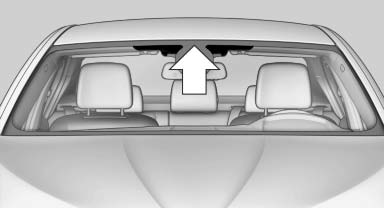General driving notes
Closing the trunk lid
![]() Drive with the trunk lid closed
Drive with the trunk lid closed
Only drive with the tailgate closed; otherwise, in the event of an accident or braking or evasive maneuvers, passengers or other road users may be injured or the vehicle may be damaged. In addition, exhaust fumes may enter the passenger compartment.
If driving with the tailgate open cannot be avoided:
- Close all windows and the glass sunroof*.
- Greatly increase the blower speed.
- Drive moderately.
Hot exhaust system
![]() Hot exhaust system
Hot exhaust system
High temperatures are generated in the exhaust system.
Do not remove the heat shields installed and never apply undercoating to them. When driving, standing at idle and while parking, take care to avoid possible contact between the hot exhaust system and any highly flammable materials such as hay, leaves, grass, etc. Such contact could lead to a fire, and with it the risk of serious personal injury as well as property damage.
Do not touch hot exhaust pipes; otherwise, there is the danger of getting burned.
Climate control windshield*

The marked area is not covered with heat reflective coating.
Use this area for garage door openers, devices for electronic toll collection, etc.
Climate control laminated tinted safety glass
The vehicle glass provides full protection against the harmful effects of UV radiation on the skin.
Mobile communication devices in the vehicle
![]() Mobile communication devices in the vehicle
Mobile communication devices in the vehicle
It is advised that you do not use mobile communication devices, e.g., mobile phones, inside the vehicle without connecting them directly to the external antenna. Otherwise, the vehicle electronics and mobile communication devices can interfere with each other. In addition, there is no assurance that the radiation generated during transmission will be discharged from the vehicle interior.
Hydroplaning
On wet or slushy roads, a wedge of water can form between the tires and road surface.
This phenomenon is referred to as hydroplaning. It is characterized by a partial or complete loss of contact between the tires and the road surface, ultimately undermining your ability to steer and brake the vehicle.
![]() Hydroplaning
Hydroplaning
When driving on wet or slushy roads, reduce your speed to prevent hydroplaning.
Driving through water
Drive though calm water only if it is not deeper than 9.8 inches/25 cm and at this height, no faster than walking speed, up to 6 mph/10 km/h.
![]() Adhere to water depth and speed limitations
Adhere to water depth and speed limitations
Do not exceed this water depth and walking speed; otherwise, the vehicle's engine, the electrical systems and the transmission may be damaged.
See also:
Updating the navigation data
General information
Navigation data are stored in the vehicle and can
be updated.
Current navigation data and the authorization
code are available from your service center.
▷ Depending on ...
BMW X6: rear seats
The head restraints in the rear cannot be adjusted
and cannot be removed. ...
Vehicle equipment
This Owner's Manual describes all models and
all standard, country-specific and optional
equipment that is offered in the model series.
Therefore, in this Owner's Manual, equipment is
also desc ...
